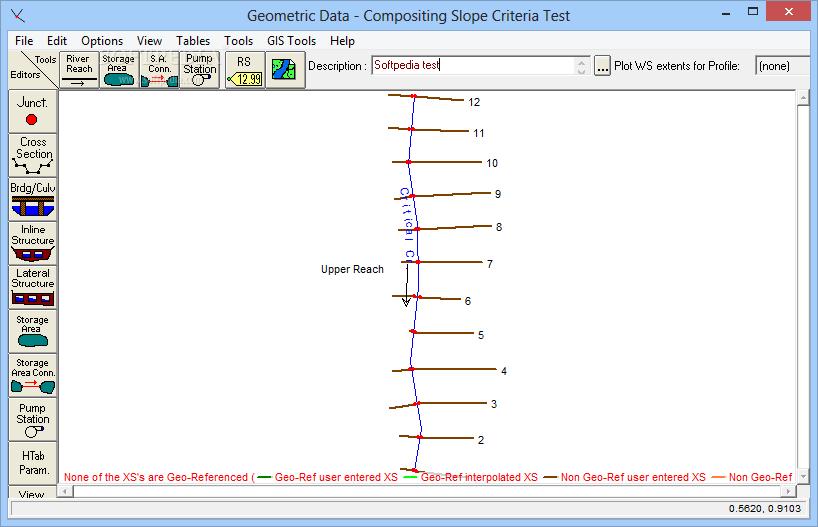2013.03.26 - Effectiveas of today, Halff is no longer selling / issuing licences of the HEC-RASFlipper. Over the last year, we appreciate the wide array of interest and apologizeif this causes you any inconvenience.
The routine inside Civil3D assumes that the hydraulic sections are for a roadway. Roadway designers assume that roadway sections are from right to left looking in the direction of increasing station. Hydraulic engineers assume that a cross section in a hydraulic model is looking left to right looking downstream. Hydraulic engineers also assume that the stationing decreases as you look downstream. This causes Civil3D to export a hydraulic model that is 'flipped' according to the standard HEC-RAS modeling nomenclature.
To correct and 'flip' the exported Civil3D HEC-RAS file from roadway to floodplain direction, Halff Associates has written a program that corrects this issue.
This program requires a unique key, to be provided by Halff Associates, for each machine that it is installed on. Once installed, click the register button to request your password. Note: As of March 26, 2013 sale of this of this program has been suspended.
We thank you all for your interest in the HEC-RAS Flipper program to correct HEC-RAS files exported from Civil3D. To assist you with creating a HEC-RAS model quickly and accurately from Civil 3D, Halff has prepared a video tutorial. Enjoy!
At Autodesk University (AU) 2011, the 'Floating Away: Connecting AutoCAD® Civil 3D® with HEC-RAS for Floodplain Mapping' class was presented detailing how to prepare detailed hydraulic models with Civil3D and HEC RAS. Click on the images below for the write-up, power-point and supporting information from this presentation.
Recent advances in Autodesk's flagship infrastructure design package, Civil 3D 2012, now allows for extraction of detailed geospatial hydraulic models for use with HEC-RAS. Combined with Civil3D's built in LiDAR point cloud processing, terrain modeling and automated grading, the HEC-RAS function allows for accurate analysis of flooding impacts from proposed improvements. Using Civil3D, evaluating the 'what-if' scenarios for floodplain reclamation, roadway construction, levee design and channel modification can be performed quicker.
Halff Associates has prepared a walkthrough tutorial PDF document for extracting detailed HEC-RAS floodplain models from surface models inside Civil 3D. This tutorial also provides guidance for using 'Export to DEM' method with the newly released and publicly available RAS Mapper in HEC-RAS version 4.1.0.
DCCADD has uploaded the Civil3D with HEC-RAS tutorial that Halff presented. It can be found on Jason Porter's DCCADD Dirt Modeler's blog. A direct link to the tutorial is also provided below.
2011.08.24
To get a FLT (ESRI float grid) from a surface in Civil3D, the tutorial uses SAGA GIS. This is an open source (free) GIS tool and requires a little bit of effort getting the conversion correct. Using the export to DEM method, Civil3D can export a surface as a GeoTiff. SAGA converts the GeoTIFF to a FLT which can be used for floodplain delineations with RAS Mapper. Download SAGA GIS here.
| About the Programmer: Mr. Carter, a project manager and professional engineer with Halff's Austin Water Resource Department, has been with the firm since 2007 and has more that 14 years of experience in the design of drainage, stream reclaimation, and restoration projects. For the past 14 years, Mr. Carter's experience has concentrated on evaluating and designing drainage facilities necessary to protect infrastructure from flooding and erosion. Contact: acarter@halff.com |




